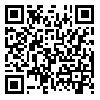Volume 29, Issue 173 (6-2019)
J Mazandaran Univ Med Sci 2019, 29(173): 11-21 |
Back to browse issues page
Download citation:
BibTeX | RIS | EndNote | Medlars | ProCite | Reference Manager | RefWorks
Send citation to:



BibTeX | RIS | EndNote | Medlars | ProCite | Reference Manager | RefWorks
Send citation to:
Raisi A, Farjanikish G, Salahi P. Comparing Healing Effects of Olive Leaf Extract Ointment and Dermaheal Ointment on Cutaneous Wound in Diabetic Rats. J Mazandaran Univ Med Sci 2019; 29 (173) :11-21
URL: http://jmums.mazums.ac.ir/article-1-12665-en.html
URL: http://jmums.mazums.ac.ir/article-1-12665-en.html
Abstract: (5989 Views)
Background and purpose: Diabetes mellitus is highly prevalent in the world and poor wound healing in diabetic patients is a serious public health issue nowadays. In this study, we evaluated the healing effects of olive leaf extract ointment on cutaneous wound in diabetic rats.
Materials and methods: Thirty six male rats were divided into three groups: a control group and two experimental groups to receive either olive leaf ointment or derma heal ointment. Diabetes was induced by a single streptozotocin injection (65mg/kg). Three days later, fasting blood glucose was measured by a glucometer. Rats with blood glucose levels above 250 mg/dl were considered as diabetic. Under anesthesia, a circular full-thickness incision (10 mm diameter) was made in shaved dorsal region. Animals in control group received only distilled water, while treatment groups were treated with ointments (once/daily) until the end of the experiment. To investigate the effects of olive leaf ointment on diabetic wounds, macroscopic and microscopic studies were performed at days 4, 7, 10, 14, and 21.
Results: Macroscopic and microscopic evaluations showed significantly higher rate of wound healing in experimental groups compared to the control group in all days after wound creation (P<0.05). But, wound contraction was significantly higher in the group receiving derma heal ointment compared with that in the group treated with olive leaf ointment (P<0.05). There were no significant differences between the two experimental groups in microscopic indices (P>0.05).
Conclusion: In this study, wound healing was significantly promoted when diabetic wounds were treated with olive leaf ointment.
Materials and methods: Thirty six male rats were divided into three groups: a control group and two experimental groups to receive either olive leaf ointment or derma heal ointment. Diabetes was induced by a single streptozotocin injection (65mg/kg). Three days later, fasting blood glucose was measured by a glucometer. Rats with blood glucose levels above 250 mg/dl were considered as diabetic. Under anesthesia, a circular full-thickness incision (10 mm diameter) was made in shaved dorsal region. Animals in control group received only distilled water, while treatment groups were treated with ointments (once/daily) until the end of the experiment. To investigate the effects of olive leaf ointment on diabetic wounds, macroscopic and microscopic studies were performed at days 4, 7, 10, 14, and 21.
Results: Macroscopic and microscopic evaluations showed significantly higher rate of wound healing in experimental groups compared to the control group in all days after wound creation (P<0.05). But, wound contraction was significantly higher in the group receiving derma heal ointment compared with that in the group treated with olive leaf ointment (P<0.05). There were no significant differences between the two experimental groups in microscopic indices (P>0.05).
Conclusion: In this study, wound healing was significantly promoted when diabetic wounds were treated with olive leaf ointment.
Type of Study: Research(Original) |
Subject:
Reconstructive and Burn, Plastic surgery
Send email to the article author
| Rights and permissions | |
 |
This work is licensed under a Creative Commons Attribution-NonCommercial 4.0 International License. |







